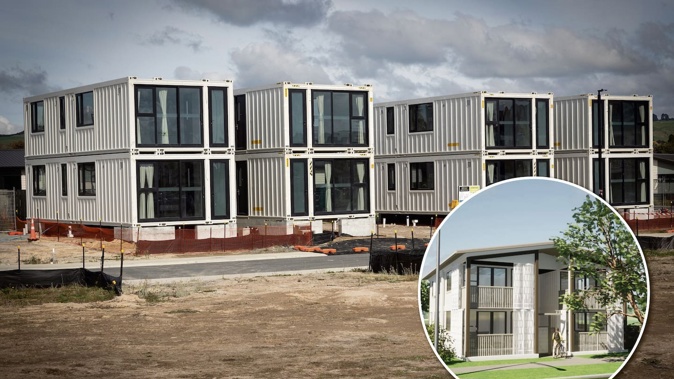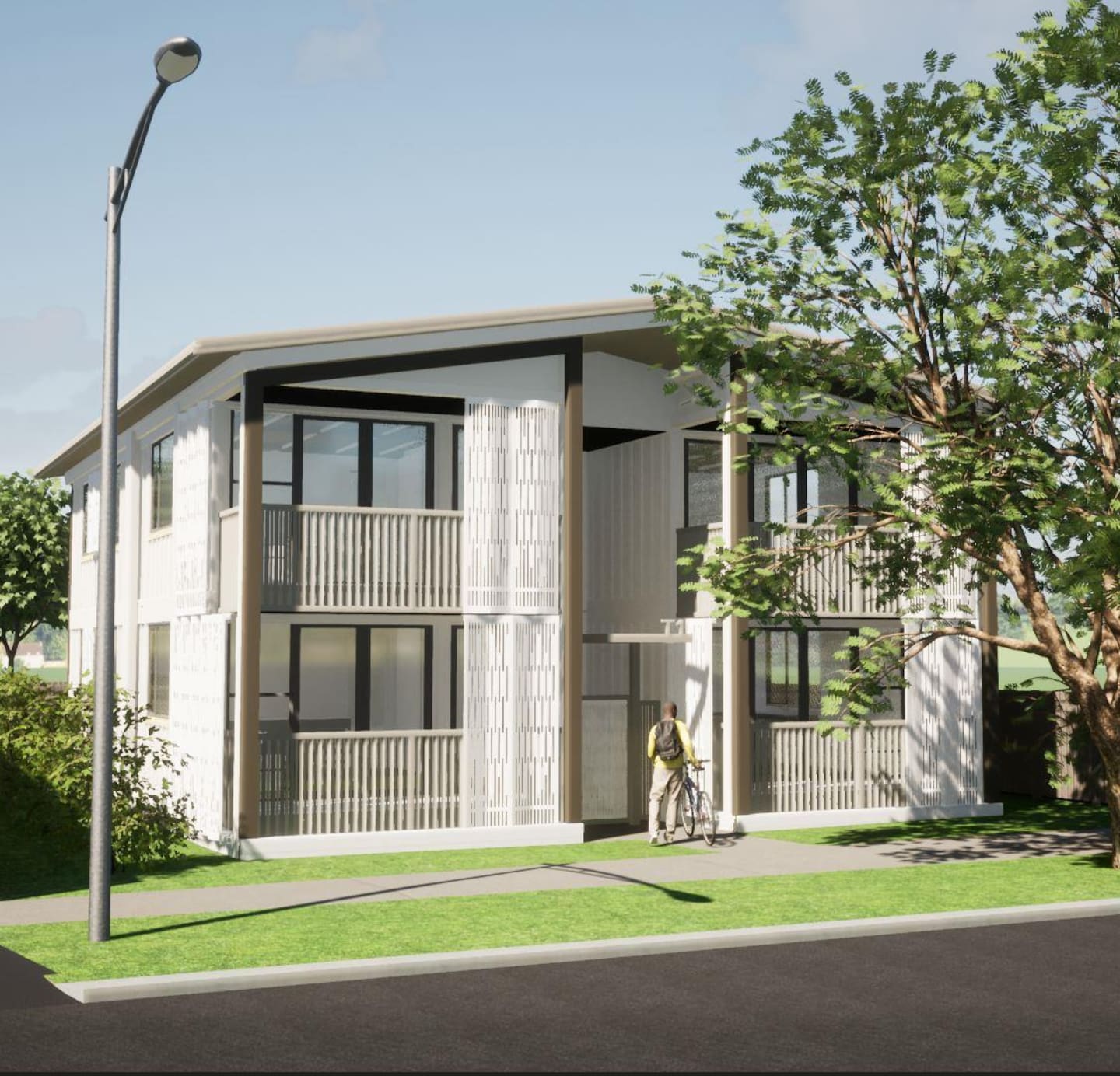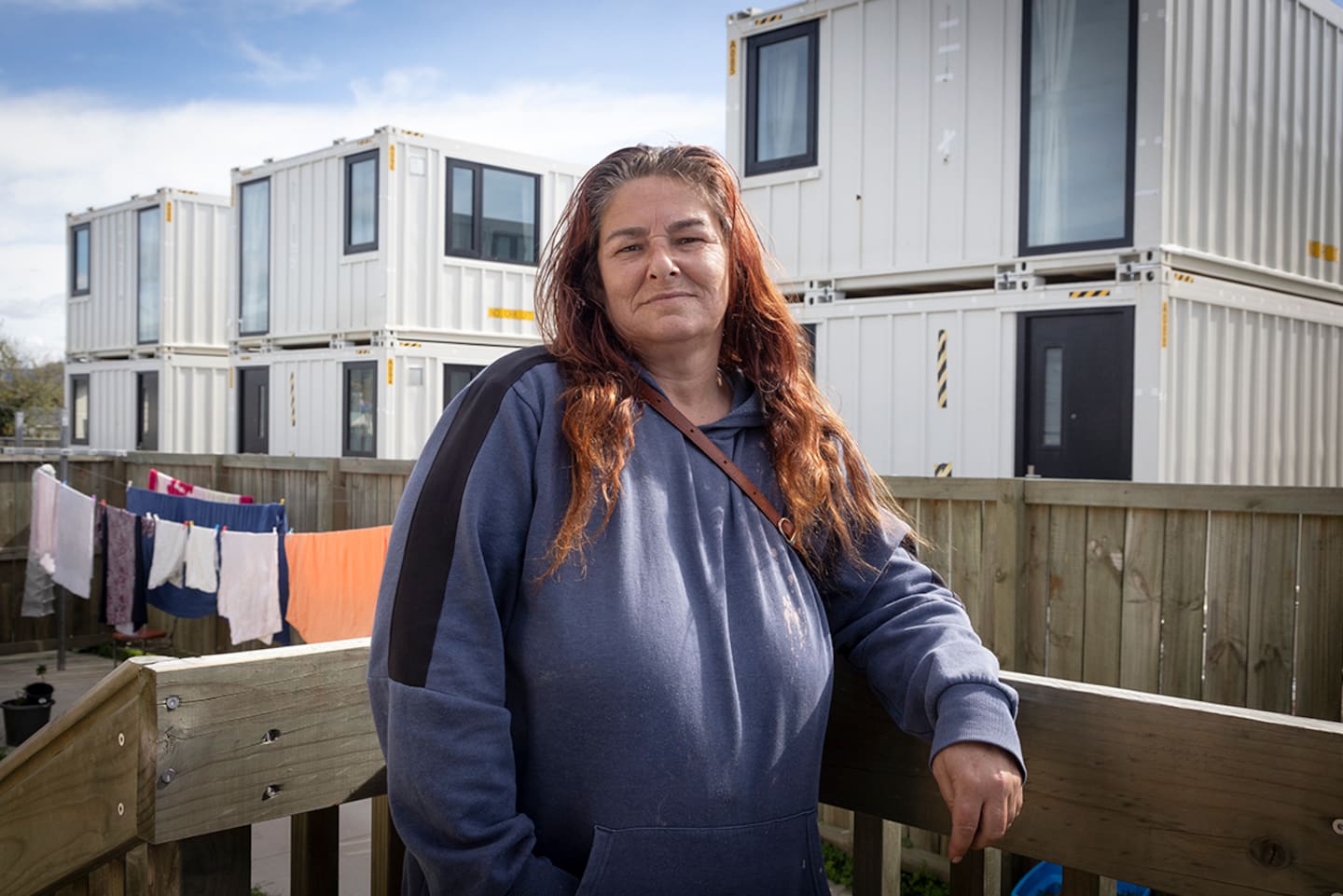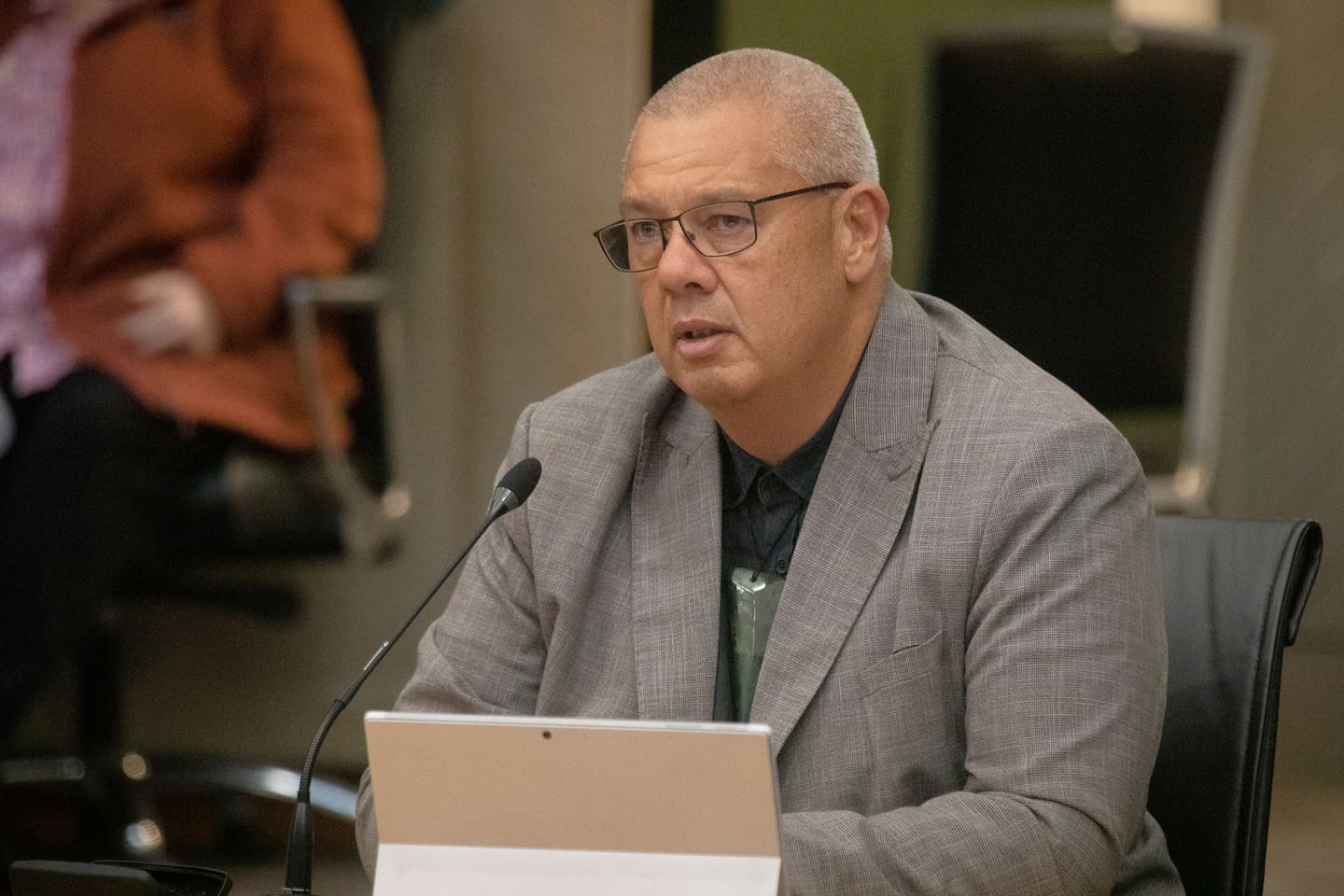
Rotorua residents shocked to see what looked like steel “container homes” on a Kāinga Ora development.
One says the area now looks like a “trailer park” and another fears for future tenants’ quality of life.
But Kāinga Ora says the imported modules are not containers and will become stylish and modern homes once finished, complying with all New Zealand standards including full insulation.
 What the new homes will look like once finished. Photo / Supplied
What the new homes will look like once finished. Photo / Supplied
The steel units stacked two storeys high have been put on the corner of Ranolf St and Malfroy Rd. Once finished, there will be three sets of four one-bedroom units - 12 homes in total.
They are part of a surge of social housing construction in Rotorua, which bucked a national consent slowdown.
Complex residents not happy
Two residents living in Kāinga Ora homes on the section spoken to by the Rotorua Daily Post said they were shocked to see houses made out of what looked to them like steel “containers”.
Annamaria Downes described them as “quite shocking”. She said they looked straight into her backyard and believed her privacy would be gone.
Downes said she lost her home and all her possessions in the Christchurch earthquake 13 years ago and moved to Rotorua to be near extended family.
 Annamaria Downes' Kāinga Ora home looks directly into the new homes, which she believes look like containers. Photo / Andrew Warner
Annamaria Downes' Kāinga Ora home looks directly into the new homes, which she believes look like containers. Photo / Andrew Warner
She said she lived in a Kāinga Ora home in Fordlands for more than 10 years and was surrounded by gang members. She said her home had rats and cockroaches and her possessions – including cars, televisions and lawnmowers – were often stolen.
While she was grateful for the new home at the Ranolf St and Malfroy Rd site since moving there in December, she said she preferred living in Fordlands because it was more private.
Her home also shook often and it gave her frightening earthquake flashbacks.
“I would have rather stayed in the block (Fordlands). As soon as there is a truck that goes down the main road, the whole ground shakes.”
 Residents say these home modules look like containers but Kāinga Ora says they're not. Photo / Andrew Warner
Residents say these home modules look like containers but Kāinga Ora says they're not. Photo / Andrew Warner
A woman living in the complex, who didn’t want her name published because she was applying for jobs, said in her opinion the area now looked like a “trailer park”.
She said it was a shame the area seemed to be going “backwards” as it had just started to feel better after troublesome tenants left in recent months.
“It’s just started to be a calm neighbourhood now from all the gangs and fights and anti-social behaviour but now they’re [in my view] putting people in containers?”
She feared what living there would be like for those people and was also concerned about the extra foot traffic and cars they might bring.
“All I can say is I used to have a beautiful view and now I have an eyesore. I just hope the people who live in them are kind.”
However, resident Elizabeth Kora, who was one of the first to move into the complex two years ago, said she enjoyed the area and it was much better than her two-and-a-half years in emergency housing motels.
She said the container-like homes could end up looking “quite snazzy” and she would refrain from making judgements until they were finished.
Rotorua resident’s concerns
Rotorua resident Tracey McLeod said she questioned the building standards, insulation, soundproofing and quality of steel in Rotorua’s geothermal conditions of what she described as “container homes”.
She told the Rotorua Daily Post she was concerned about the “precedent” they set for housing standards in Rotorua.
In her view: “This is in real contrast to Tony Bradley’s Kāinga Ora development on Lake Rd, where only the finest of roofing materials was used as cladding on the buildings.”
McLeod, who is a member of emergency housing lobby group Restore Rotorua, questioned whether Kāinga Ora had “run out of money”.
What Kāinga Ora says
Kāinga Ora Bay of Plenty regional director Darren Toy said the homes in each set would be joined by a roof and a communal stairwell.
All of the homes will have screening to one side of the balconies to enhance privacy and there would be no back balconies that face existing neighbours.
The homes were being built using modular construction. They start as steel modules manufactured offsite before being joined together and established onsite.
 Kāinga Ora Bay of Plenty regional director Darren Toy. Photo / Andrew Warner
Kāinga Ora Bay of Plenty regional director Darren Toy. Photo / Andrew Warner
Toy said guttering and downpipes were then installed before being connected to services.
“While they currently look very different to the traditional wooden framing we see in New Zealand, they will become stylish modern homes that complement the other new homes in the area,” Toy said.
He refuted comments they were containers.
“These are not containers. Because they are made from steel they may appear alike, but that’s where the similarities stop. They are fully functioning modern homes, that meet all New Zealand standards (New Zealand Building Code and healthy home standards).
“They come fully insulated with double glazing and insulated walls to ensure tenants are cool in summer and warm in winter.”
He said the only change to what was originally consented was the colour and a small change to the balcony.
Toy said quality assurance was completed by independent chartered professional engineers.
Inspections ensured the modules meet New Zealand standards before they leave China.
“They arrive in New Zealand complete with interiors. Kitchens, bathrooms, floors and interior paint is included. This means the homes can be made ready for whānau in need of a home, to move in sooner.”
He said Kāinga Ora has used off-site factory manufacturing for some time to meet the need for more social housing. About 12 per cent of all public housing developments in New Zealand would use it in the year to June.
Kelly Makiha is a senior journalist who has reported for the Rotorua Daily Post for more than 25 years, covering mainly police, court, human interest and social issues.
This article was originally published on the NZ Herald here.
Take your Radio, Podcasts and Music with you









